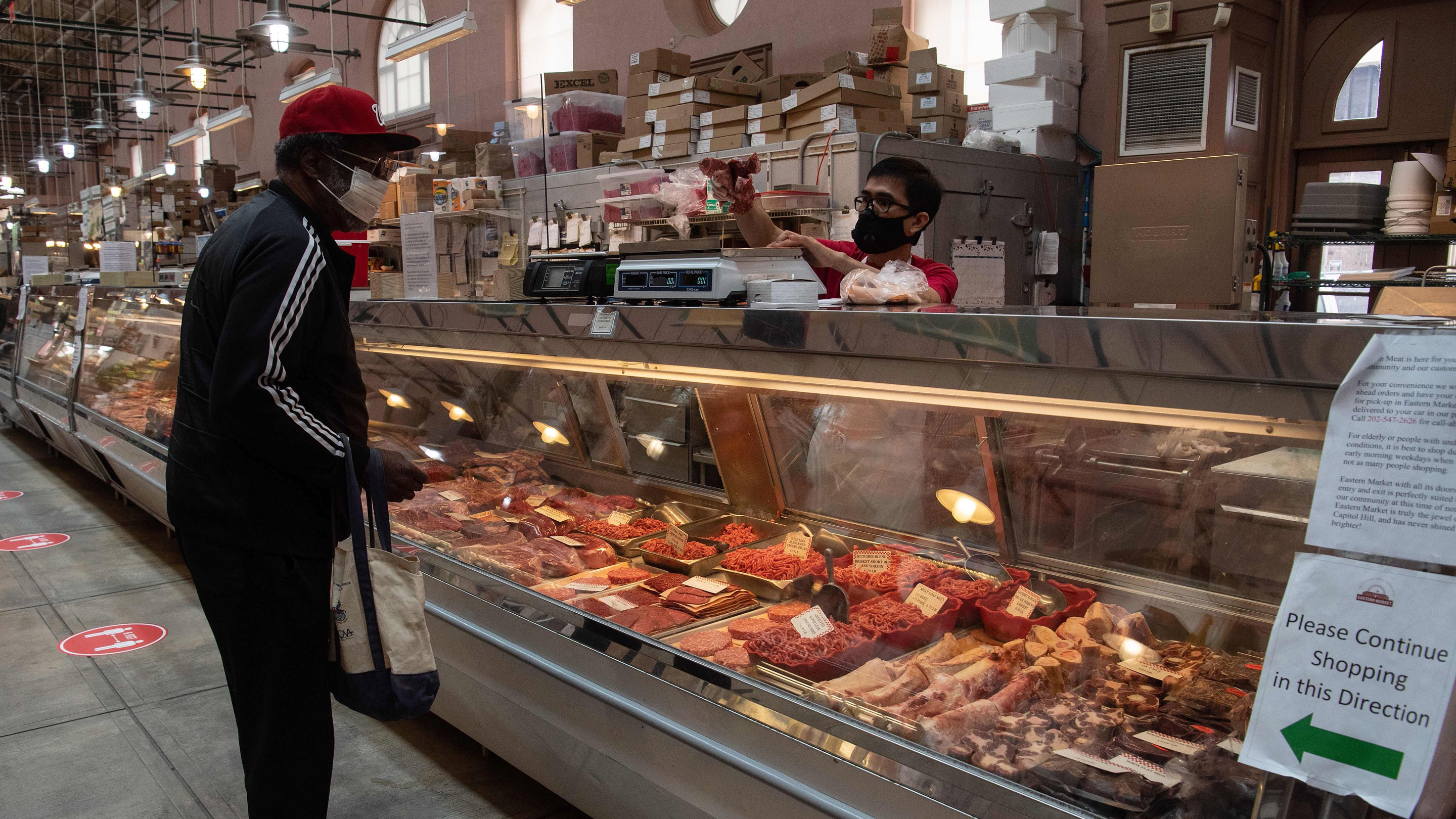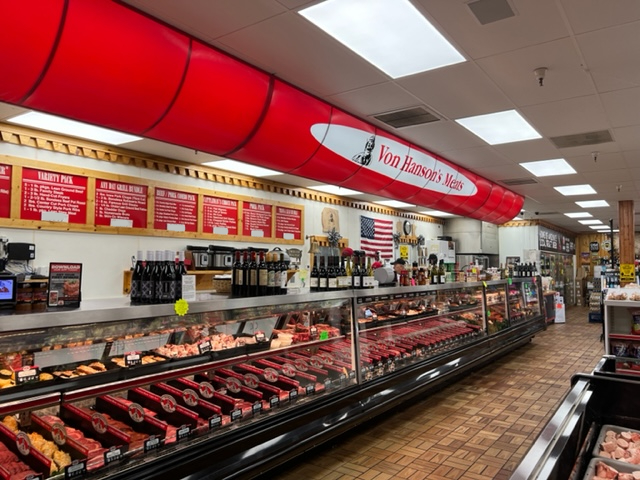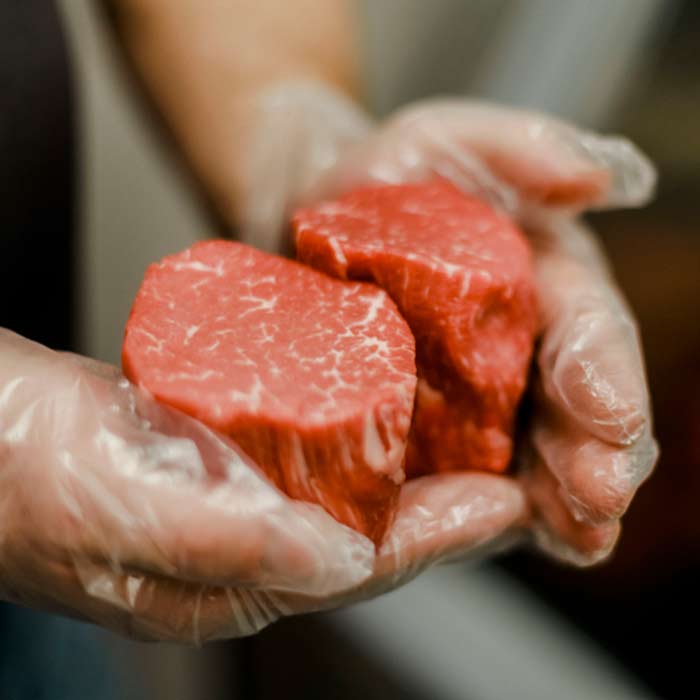Bagley Farms Meat Market Edwardsville IL: Your Relied On Resource for High-Quality Meats
Bagley Farms Meat Market Edwardsville IL: Your Relied On Resource for High-Quality Meats
Blog Article
Uncover the Art of the Butcher's Cut in a Modern Meat Market
In the ever-evolving landscape of contemporary meat markets, the butcher's cut has transcended its conventional roots, merging age-old craftsmanship with contemporary methods. bagley farms meat market edwardsville il. Today's butchers are not merely processors of meat; they are knowledgeable artisans that stress sustainability and ethical sourcing. Their know-how in picking and preparing cuts tailored to specific cooking demands uses an unparalleled eating experience. Yet, what absolutely sets the modern butcher apart is their capability to forge a much deeper link in between customers and the origins of their meat. Just how do these masters equilibrium tradition with innovation, and what effects does this have for the future of meat usage?
Development of Butchery Techniques

The mid-20th century saw butchery techniques additionally refined by clinical understandings right into muscle biology and meat aging, boosting both tenderness and taste. Advancements like vacuum packaging and refrigeration extended item shelf-life, enabling butchers to expand offerings and enhance high quality control. This period also noted the increase of customized equipment, such as band saws and meat slicers, which raised accuracy and performance in meat handling.
Digital systems now assist in monitoring pet provenance and optimizing cuts to satisfy particular client choices. Furthermore, a resurgence in artisanal butchery has emerged, mixing traditional skills with modern-day knowledge to cater to consumers looking for ethical and lasting meat alternatives.

Comprehending Meat Cuts

Recognizing the ins and outs of meat cuts is important for both butchers and customers seeking high quality and value. Each cut comes from a various component of the pet, passing on special flavors, structures, and cooking approaches. Mastery of these distinctions not just improves cooking experiences yet additionally optimizes the energy of each carcass. For butchers, exact cuts reflect skill and respect for the craft, making certain minimal waste and ideal yield.
The main groups of meat cuts include primal, sub-primal, and retail cuts. Primal cuts, such as the loin, rib, and chuck, are the big sections at first separated from the carcass. Butchers then damage these down additionally into sub-primal cuts, prior to finally producing retail cuts offered to consumers, like ribeye or tenderloin. Each phase requires careful attention to anatomical framework and muscle mass composition.
Recognizing muscle make-up is critical; muscle mass utilized much more often by the pet have a tendency to be tougher and are best matched for slow-moving cooking methods, while less-used muscles, like those found in the loin, are extra tender and ideal for grilling or roasting. Familiarity with these distinctions empowers customers to make enlightened choices, improving their cooking endeavors.
Selecting Quality Meat
Picking the right meat involves more than just picking an aesthetically enticing item from the display screen. The art of picking top quality meat calls for a critical eye and expertise of details attributes that signify quality and quality. To start with, pay focus to the shade; beef ought to have a brilliant, cherry-red shade, while lamb should exhibit a soft pink tone, and pork a light pink. This suggests the meat is fresh and hasn't been exposed to oxygen for too lengthy.
Secondly, take into consideration the marbling, which refers to the white streaks of fat within the muscle mass. Proper marbling is a vital sign of tenderness and taste, as it melts throughout cooking, boosting the meat's juiciness. Keep in mind, greater marbling commonly correlates with exceptional high quality cuts, such as USDA Prime.
Texture is an additional vital factor; meat must feel solid to the touch, not slimed or excessively soft. In addition, be mindful of the fragrance. Fresh meat should have a tidy, neutral scent, devoid of any kind of sour or off-putting smells.
Pairing Cuts With Food Preparation Techniques
Efficiently matching cuts of meat with visit this web-site the ideal cooking techniques is vital for attaining optimal flavor and appearance. Different cuts vary in inflammation, marbling, and connective cells content, each needing details strategies to unlock their potential. As an example, tender cuts like filet mignon and ribeye, with their inherent marbling, advantage from high-heat, quick-cooking methods such as grilling or pan-searing. These techniques boost the meat's all-natural flavors and news guarantee a juicy surface.
Alternatively, harder cuts like brisket and chuck roast are abundant in collagen, which damages down right into jelly when prepared slowly. These cuts are suitable for braising or slow-moving roasting, allowing the meat to soften over time and develop deep, complex flavors. In a similar way, cuts such as short ribs and pork shoulder prosper with slow-cooking techniques, where prolonged cooking times transform their robust textures into delicious recipes.
Lamb shanks and oxtail, which need prolonged cooking to soften, are excellent candidates for cooking or slow-moving simmering. These techniques coax out rich, hearty tastes while preserving wetness. By understanding the unique characteristics of each cut, cooks and home cooks alike can raise their culinary productions, ensuring each meal is both satisfying and memorable.
The Butcher's Function Today
Browsing the progressing landscape of the modern meat market, the butcher's function today extends beyond plain preparation of cuts. Contemporary butchers are cooking artisans, educators, and advocates for lasting practices.
Along with crafting precise cuts, butchers now involve directly with clients, supplying cooking advice and customizing options to fit specific requirements and choices. Their competence in meat aging, marbling, and taste profiles empowers customers to make enlightened decisions, improving their cooking experiences. This personalized service exhibits the butcher's advancing role as a trusted expert in the kitchen.
Additionally, butchers are crucial in reducing waste, using entire pets to create diverse products such as sausages and stocks - bagley farms meat market edwardsville il. This extensive strategy not only respects the animal however likewise straightens with modern sustainability objectives. By doing this, the modern butcher symbolizes both practice and technology, adjusting to an ever-changing market while preserving the artistry and integrity of their craft

Verdict
Mastery in recognizing diverse meat cuts and high quality indicators equips butchers to provide educated recommendations, lining up details cuts with optimal cooking approaches. By honoring historical techniques while welcoming contemporary needs, the butcher's role stays essential click site in today's sophisticated meat market.
Report this page